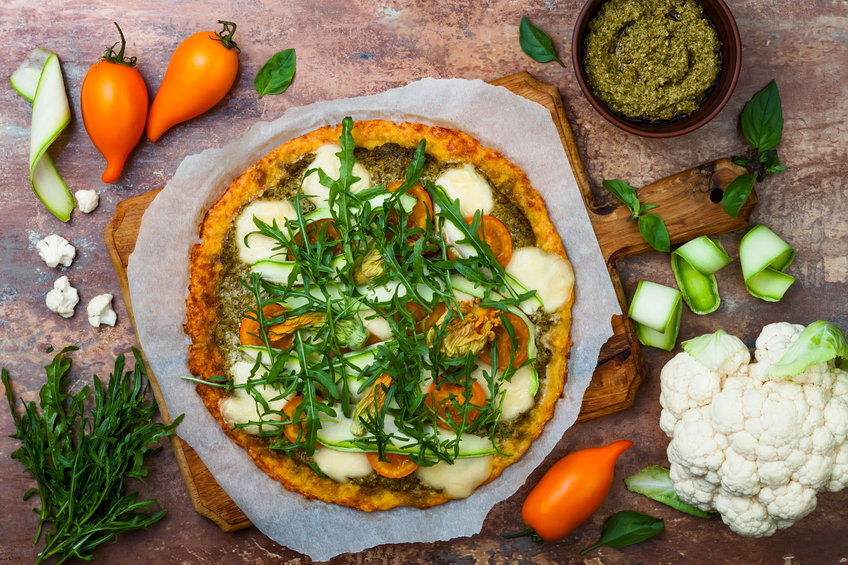Plant-based proteins make it easy to expand your pizza offering
Consumer demand for plant-based menu options when dining out or ordering in has been on the rise for some time. In addition to the 2.5 million Australians following a meat-free diet, the ‘flexitarian’ trend of people reducing their meat intake by replacing meat with plant-based proteins several times a week is no longer seen as a passing fad but is clearly here to stay.
With numerous plant-based meat and smallgoods ingredients now available from suppliers, there’s quite a variation in quality, taste and appearance – so it’s important to trial a selection of plant-based ingredients and see how they compare to each other as well as to the regular meat ingredients they’ll be replacing. Many plant-based proteins enable you to do a straight swap of the meat ingredient with the plant-based alternative – and not have to change your recipe, cooking time or prep requirements. So look for plant-based products which brown, cook and present like meat – they won’t necessarily taste like meat, but they should have a meat-like texture as opposed to an overly chewy, ‘cereal’ style mouthfeel
Plant-based proteins are often designed to have a neutral flavour which lets your other ingredients shine through – so in the case of pizzas, you should judge the flavour of the pizza as a whole rather than that of the plant-based ingredient in isolation. A good quality plant-based pepperoni, for example, should impart a spiciness and mouthfeel similar to that of regular pepperoni and complement your other pizza ingredients without the need for further menu modification.
In addition to plant-based pepperoni, plant-based Italian sausage and meat crumble, plant-based chicken and turkey, plant-based meatballs, plant-based mince and even plant-based pulled meats are all available for use on pizza. Your main focus in choosing which to trial in your business should be to ensure the texture, presentation and mouthfeel meets with your customers’ expectations.
Latest plant-based protein trends
SEAFOOD
With plant-based beef and chicken now well established, plant-based seafood is on the rise, including tuna, crab cakes and fishless fish burgers!
ICE CREAM
Food technologists are creating dairy free ice cream which uses fermentation to produce dairy proteins like casein and whey without the cow!
UPCYCLING
This process extracts plant-based proteins from byproducts, such as sunflower seed protein from the leftovers of sunflower oil production. Upcycled kale, sweet potato and cauliflower is now being used as a protein ingredient.
NEW SOURCES
Key emerging protein sources include sunflower, mung bean, potato, rice, duckweed, chickpea, navy bean, oat and fungi.
Advice
Do your ingredients hold up during delivery?
The events of recent months have refocused attention on the home delivery market as a key income channel for foodservice. But while it’s smart business to take advantage of this, it does come with its own set of challenges. Chief among these is making sure when that your pizza and pasta arrives at your customer’s door, the quality and presentation is the same as when it leaves your premises.
One way is to ensure you’re using ingredients that are truly fit for purpose – ie, those which not only deliver consistent quality but are also designed to be durable enough to travel well.
The fact is some ingredients hold up over time far better than others. Your choice of pizza cheese is a good example. A high quality pizza cheese like Perfect Italiano Mozzarella has been developed to maintain both its presentation and performance over the time it takes to go from your pizza oven to the customer’s address. It delivers not only on visual appeal but also taste.
And when you’re preparing pasta for home delivery, you can ensure its quality stands up by likewise choosing ingredients which withstand the rigours of travel – such as Anchor Extra Yield Culinary Cream. Its superior coating consistency makes it the perfect choice for thick, creamy sauces which will hold up during the delivery process, arriving at the customer’s address without any compromise on the meal’s presentation.
Anchor Extra Yield Culinary Cream is fully pre-reduced which means you don’t have to wait for it for reach optimum coating consistency – just add your other ingredients and it’s ready to serve. With up to 30 per cent better yield than regular thickened cream, Anchor Extra Yield helps to ensure your home delivery customer can enjoy the same pasta experience at home as when dining out.
To complement your fit for purpose ingredients, you should also choose durable,fit for purpose packaging such as thermal pizza delivery bags, tamper-evident containers and bottles, heat-sealable bags and tamper-evident labels/tape. This way, not only will your meals reach your customers in pristine condition, they’ll also have the reassurance that their order hasn’t been touched and is safe to consume.
Perfect Solutions
Benefits of joining a food buying group
With the end of lockdowns finally on the horizon, many foodservice businesses are looking forward to opening up again to full service and seeking to rebuild. But with the restrictive circumstances of recent months impacting on cashflow, this is likely to be a challenging time for many. While costs will typically need to be cut, at the same time you can’t afford to compromise on the quality of your ingredients if you want to keep meeting your customers’ expectations.
One way to manage your ingredients costs more effectively might be to consider joining one of the food buying groups or ‘aggregators’ which are readily becoming more commonplace, not only in our urban centres but increasingly also in regional areas.
In recent times buying groups have modified their business model to be less like Ebay, with buyers competing via auction which drives prices up, and more like Amazon Marketplace – a one-stop shop for you to order wholesale.
Buying groups like this typically give you access to multiple local suppliers, list a wide range of products across various categories, and enable to you to place your entire order at once rather than having to source product from multiple suppliers.
And with food typically priced via set weights instead of random weight, you can maintain greater control over your costs and reduce your food wastage while also ensuring more consistency in the ingredients you buy.
You also get everything in one delivery – which means you can put everything away at once, saving on time and labour – and only have to pay one invoice. And for food businesses operating across multiple sites, you can ensure everyone is ordering the same product and reap the benefits of a locked-in price structure.
These buying groups are usually free to join – they make their money via the deals they sign with food suppliers – and in some cases feature not just food but also packaging, apparel, kitchenware and alcohol, making them truly a one-stop shop.
You may also find that joining a buying group gives you access to gourmet local suppliers which aren’t stocked by your local big distributor and which you would otherwise have to contact directly. Fresh pastas and sauces, gourmet pizza bases and specialist smallgoods are just some of the ingredients which a good buying group can put within your reach.
So if you’re looking for more control over your costs and supply chain – especially for those menus which use a lot of fresh fruit and vegetables, such as pizza and pasta – then a buying group may be the way to go, giving you more consistency in yield, less wastage and allowing you to take advantage of greater buying power.
Sign up today to receive the FREE Club Perfect ON MENU E-newsletter










